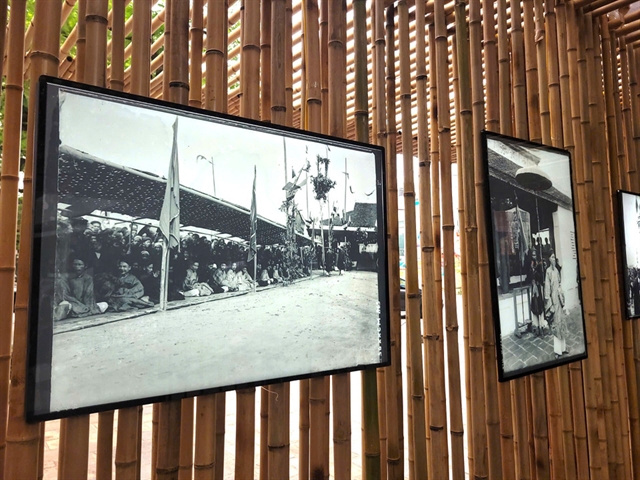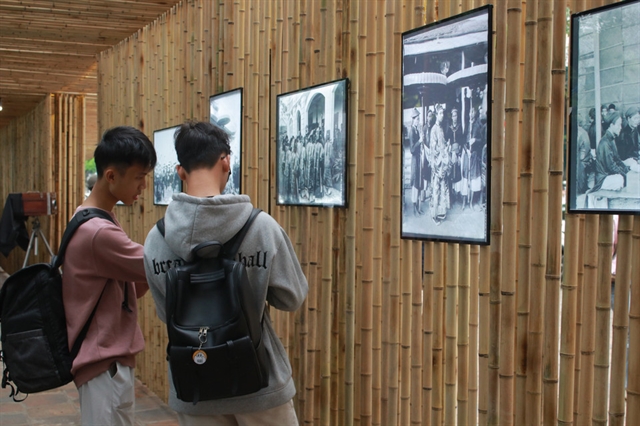 Life & Style
Life & Style

 |
| The photographs on display are among the few surviving records, preserved by the National Library of France and the French National Geographical Society. Photos vietnamnplus.vn |
HÀ NỘI — A new exhibition at the Temple of Literature in central Hà Nội is drawing visitors to a rare visual journey through time, revealing the final moments of Việt Nam’s Confucian-era examinations and the education system that shaped generations.
Century-old photographs capturing the end-of-century examination culture are now displayed at the Temple of Literature, where tradition and memory meet.
The exhibition introduces a collection of rare historical photographs taken by French photographer Firmin-André Salles. His works document the khoa thi hương (the triennial regional examination) of 1915 in Nam Định -- the last Confucian civil-service examination in northern Việt Nam, marking the close of an era in the country’s scholarly tradition.
The hương examination was one of three main levels in the Nguyễn dynasty (1802–1945) examination system, alongside the hội (national) and đình (royal) exams. Held every three years, it selected capable scholars for higher examinations and, eventually, to posts within the imperial administration.
The exhibition not only provides a detailed glimpse into a defining cultural and educational milestone, but also invites reflection on how photography preserves and shapes collective memory.
Salles (1860–1929) was a French explorer and photographer who worked in Việt Nam, Laos and Cambodia between 1896 and 1898. Using then-modern dry-plate technique, he produced images of notable clarity, depicting landscapes, daily life and cultural activities across Indochina in the late 19th century.
Thanks to the presence of Governor-General of Indochina Paul Doumer at the opening ceremony of the hương examination in 1897, Salles was able to capture an extraordinary Vietnamese social event.
The photographs on display are among the few remaining visual records, preserved by the National Library of France and the French National Geographical Society, portraying the solemn yet vibrant atmosphere of the examination.
Tradition reframed
According to Eric Soulier, head of Cultural Education and Science at the Embassy of France and director of the French Institute of Hà Nội, the Temple of Literature was chosen as the exhibition venue not only for its symbolic significance but also for its historic role at the heart of the Confucian education system.
 |
| The exhibition is one of a series of activities held at Photo Hanoi 2025. |
"In addition to showcasing these rare photos, the exhibition also examines the role of photography in how we perceive history and sheds light on the visual and educational practices of the feudal period," Soulier said at the opening ceremony on November 6.
Though it did not host every imperial examination, the Temple of Literature was regarded as the cradle of scholarly training and a revered site for honouring academic achievement — particularly through the tradition of inscribing the names of successful candidates on stone steles following the đình examination.
"We hope this exhibition will serve as a source of inspiration, nurturing the values of learning and connecting the essence of Việt Nam’s traditional education - respect for teachers, love of knowledge and appreciation of talent - with UNESCO’s four pillars of education: learning to know, learning to do, learning to live together, and learning to be," said Lê Xuân Kiêu, director of the Centre for Cultural and Scientific Activities of the Temple of Literature.
The exhibition runs until November 30 as one of the highlighted programmes of Photo Hanoi 2025, bridging history and art through the lens of memory. VNS




